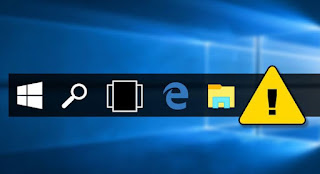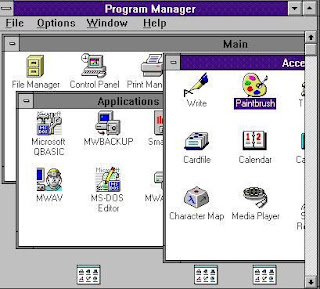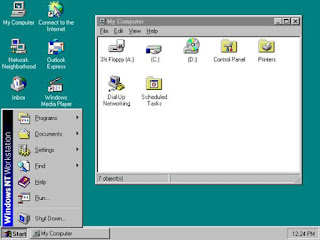What is Windows?
Microsoft Windows:
The leading operating system (OS) for homes and businesses, Windows is produced by Microsoft.
Since its introduction in 1985, the graphical user interface (GUI)-based OS has been launched in numerous iterations, as will be discussed below.
In 1975, Bill Gates and Paul Allen formed a business that would eventually become Microsoft.
Together, Gates and Allen created the Unix variant Xenix as well as a BASIC interpreter for the Altair 8800. The corporation was established in 1981.
Microsoft produces and markets the Windows OS in addition to gaming consoles like the Xbox Series X and a range of PC, laptop, and notebook devices like the Surface Pro.
Content Table:\
- What is Windows?
- History of Windows
- Windows Editions
- Features of Windows
- Windows Versions By the years
- Why Microsoft Windows Called Windows?
- Windows versus MacOS
- Windows versus Linux
- What came before Windows?
Let's Check it out...
1. What is Windows?
Microsoft created the graphical operating system known as Windows. It offers a way to access the internet, lets users browse and store files, run software, play games, and watch videos.
It was made available for both personal and business use. Microsoft released version 1.0 as the initial release.
On November 10th, 1983, it was made available for use with Windows for both personal and business purposes.
Later, it was made available on other Windows versions, including the most recent one, Windows 10.
The first version of Windows geared for businesses, known as Windows NT 3.1, was introduced in 1993.
The next versions, Windows 3.5, 4/0, and Windows 2000, were thereafter released.
When Microsoft debuted its multiple XP Windows versions in 2001, they were created for both a home and office setting.
It was created using common x86 hardware, such as Intel and AMD processors.
2. History of Windows
When MS-DOS, a text-based command-line operating system, was released, Microsoft rose to prominence in the technology industry.
DOS was mostly based on intellectual property that was purchased, QDOS.
Xerox's Alto, which debuted in 1979, and Apple's LISA and Macintosh systems, which followed, were among the GUI-based OSes available at the time.
Such systems were referred to as WIMPs, which stood for "windows, icons, mouse, and pull-down menus (or pointers)," by die-hard MS-DOS users.
However, Gates began a project he termed Interface Manager after realizing the potential of GUI-based computers.
Gates reasoned that he could make the GUI accessible to more people for less money than the $9,000 LISA.
The project team chose "Windows" as the name of the new OS in an ironic move as the rest of Microsoft agreed with this concept.
In 1983, Microsoft made a release announcement for Windows 1.0, the original version of Windows.
A few of the features the business licensed from Apple were used in the UI. In 1985, Microsoft introduced Windows 1.0.
In 1988, Apple sued Microsoft and Hewlett-Packard for $5.5 billion, claiming that the companies had been denied permission to utilize specific GUI components.
Microsoft and Hewlett-Packard did not go beyond the 1985 agreement, a federal court found in 1992. In 1994, the decision was upheld when Apple filed an appeal.
Apple's macOS and Linus Torvalds' open source Linux OS are two alternatives to Windows.
While macOS is renowned for its reliability and user interface, Linux has an advantage in terms of availability due to its free price.
Although there are currently more than 1.3 billion devices running Windows 10, Microsoft Windows is still the market leader thanks to a continual stream of new updates that enable hardware advancements.
3. Windows Editions
Beginning with Windows XP, Microsoft has created a number of Windows editions.
These versions all use the same basic operating system, but some versions also come with more expensive advanced capabilities.
The most popular editions of Windows are:
(i) Windows Home
(ii) Windows Professional
(i) Windows Home:
The entry-level version of Windows is Windows Home. It delivers all of Windows' essential features, including the ability to browse the web, connect to the Internet, play video games, use office programs, and watch films.
Additionally, many new computers already have it installed and are less expensive.
(ii) Windows Professional:
Other names for Windows Professional include Window Pro and Win Pro. Power users and small to medium-sized enterprises will benefit from this improved version of Windows.
Along with all of Windows Home's capabilities, it also includes the following:
Remote Desktop: A remote desktop connection can be established by users of Windows Professional editions.
It gives users the choice to connect remotely with another computer and share its mouse, keyboard, and viewing display.
The main port used to reach it is 3389. We can also establish a remote desktop connection using the TeamViewer or VNC software.
 |
Bit-locker: Users can use the AES (Advanced Encryption Standard) technique to encrypt a storage disk.
Windows 7 and Windows Vista (only ultimate and enterprise versions), as well as Windows Server 2008, both have this functionality.
Trusted Boot: It offers security by encrypting the boot loader and safeguarding the computer from rootkits (a group of software tools that permit users to break into another computer without authorization).
Windows Sandbox: Users can experiment with or test computer security in a sandbox that is installed on a computer, network, or online service without disrupting the system.
Hyper-V: It was created on June 26, 2008, by Microsoft Corporation and stands for a hypervisor.
A different name for it is Windows Server Virtualization. Servers running virtual machines and third-party software, like as VirtualBox, are virtualized using Hyper-V.
Group Policy Management:
Group policies can be specified by an administrator in an organization to control various Windows users.
It offers compatibility for computers with higher RAM than 128 GB.
It also provides more options for installing Windows updates, as well as flexible scheduling and deferral of approximately 34 days.
4. Features of Windows
There are numerous features in Microsoft Windows designed to aid users. Here are some examples of its wonderful qualities:
Control Panel: The Control Panel feature of Windows offers users a variety of tools for configuring and managing the resources on their computer.
Users can modify settings for things like audio, video, printers, mice, keyboards, network connections, date and time, power saving choices, user accounts, installed applications, and more.
Cortana: A voice-activated feature called Cortana was introduced with Windows 10 and can take spoken instructions.
It may carry out a variety of functions, including providing answers to your inquiries, searching computer data, making online purchases, setting reminders and appointments, etc.
Additionally, it functions similarly to other voice-activated services like Google Assistant, Alexa, or Siri and offers the added benefit of searching your computer for information.
In Windows 10, press Window + S to launch Cortana.
File Explorer: The computer program that shows your files and directories is also known as Windows Explorer.
Users can examine the data on the hard drive, SSD, and other attached removable devices, such as USB drives and CDs, and manage the content as needed by deleting, renaming, searching for, and transferring the data.
Internet Browser: The internet browser is crucial for everything, including searching for information, seeing pages, shopping online, playing games, and watching movies.
An internet browser is pre-installed on Windows. The Edge web browser is the default browser in Windows 10.
Furthermore, from Windows edition 95 until version 8.1, Internet Explorer served as Microsoft Windows' default browser.
 |
| Internet Browsers |
Taskbar: Windows has a taskbar that shows users the programs that are presently open and gives them access to any other programs. It also has the notification box on the right side, which displays the time and date as well as information about the battery, network, volume, and other background programs.
 |
| Task Bar |
Start Menu: A start menu is present in Microsoft Windows to the taskbar's left. It lists the installed software and tools on the machine. By simply clicking the Start menu button or using the Start key on the keyboard, you can access it.
Task Manager: The task manager function in Windows gives information about the active processes and applications on the system.
You may also check how much each application is using in terms of system resources like RAM, CPU, and disk I/O.
Microsoft Point: Since November 1985, Windows operating system has shipped with Microsoft Paint already installed. The software is easy to use for creating, viewing, and editing images.
It provides a number of tools for drawing, cropping, resizing, and saving images with various file extensions.
Disk Cleanup: It is used to clear disk space by getting rid of temporary or unused files.
Additionally, it helps to improve the computer's performance and increase storage space so that programs and documents can be downloaded.
 |
| Disk Cleaner |
5. Windows Versions By the years
1985: Windows 1.0
 |
| Windows 1.0 |
Windows 1.0, like many other early GUI operating systems from Microsoft, was essentially a software that ran on top of DOS.
Because Windows wasn't released until two years after Microsoft first announced it, there were rumors that it was just a vaporware product.
For the tech behemoth, the rollout was a rocky beginning. The software was deemed unstable by users.
However, the point-and-click interface made using a computer simpler for first-time users.
Customers who would have liked the simple start screen above the command-line interface were attracted to Windows' user-friendliness.
Many of the typical elements included in today's GUI, including scroll bars and "OK" buttons, were available in Windows 1.0.
1987: Windows 2.0 ,2.11
 |
| Windows 2.0 |
The Apple LISA and Windows 2.0 shared more GUI features, were faster and more stable, respectively.
The system ran the initial Excel and Word versions and introduced the control panel.
Microsoft modified Windows 2.0 to be compatible with Intel's 80386 processor and enabled expanded memory.
At the same time as computers were becoming more prevalent, Microsoft rose to become the world's largest software vendor.
The expanding personal computer (PC) market was aided by Windows systems being more accessible and reasonably priced.
1990: Windows 3.0
 |
| Windows 3.0 |
For a more responsive system, Microsoft tuned the Windows 3.0 OS for the 386 CPU, which nevertheless operated on top of DOS.
The casual games Solitaire, Minesweeper, and Hearts, which are well-known to most Windows users, were included in Windows 3.0, which supported 16 colors.
More computationally intensive games continued to run directly on MS-DOS.
Exiting to DOS provided direct hardware access to games and increased the amount of system resources available, which would have otherwise gone to Windows. In 1993, Microsoft made Windows 3.1 available as a paid sub-release.
Exiting to DOS provided direct hardware access for games and increased the amount of system resources available, which would have otherwise gone to Windows.
In 1993, Microsoft made Windows 3.1 available as a paid sub-release.
Peer-to-peer networking and support for TrueType fonts were two features of Windows 3.1.
1993: Windows NT
The release of Windows NT signaled the conclusion of a side project to create a cutting-edge OS. NT had a hardware abstraction layer and was 32-bit.
Although DOS was accessible via the command prompt, it could not run the Windows operating system.
Instead of being intended for residential users, Microsoft created NT as a workstation OS for enterprises.
The Start button was added by the system.
1995: Windows 95
 |
| Windows 95 |
With a marketing effort for Windows 95 that used The Rolling Stones song "Start Me Up" to commemorate the Start button's widespread adoption, the Windows OS was first made available to a larger audience.
Windows 95's plug-and-play function facilitated hardware installation.
Microsoft also introduced support for TCP/IP networks, 32-bit color depth, and improved multimedia features.
1998: Windows 98
 |
| Windows 98 |
In Windows 98, Microsoft increased speed and Plug & Play hardware support.
In addition, the business introduced the Quick Launch taskbar and USB support in this update.
As Windows gaming technology advanced, DOS gaming started to decline. The OS was a desirable target for viruses because of its popularity.
Microsoft built its own web browser into the desktop and incorporated web technology into the Windows user interface (UI).
One of the key problems in the U.S. Justice Department's antitrust lawsuit against Microsoft in the 1990s was this feature.
2000: Windows Me
 |
| Windows ME |
The Windows 95 codebase was last used in Windows ME (Millennium Edition). System Restore was one of its most prominent new features.
This release was criticized by Microsoft and Steve Ballmer for being unstable by a lot of users.
ME, according to some commentators, stands for "mistake edition."
In the same year, Microsoft also released Windows 2000, a desktop operating system.
This OS was built by Microsoft using the more reliable Windows NT technology.
Windows 2000 was installed by certain home users because of its higher reliability.
Plug and Play support was improved by Microsoft, encouraging users of Windows Home to switch to this the operating system.
2001: Windows XP
As the first NT-based operating system, Microsoft released Windows XP, with a version specifically designed for home users.
Users at home and reviewers gave XP excellent marks. With its vibrant themes, the system gave Windows a better-looking appearance and gave users a more reliable platform.
Microsoft's release effectively put an end to gaming on DOS. In 3D gaming, the DirectX API made it possible to use features that OpenGL found challenging.
The first version of Windows to allow 64-bit computing was XP, however it was not fully supported, lacking running drivers and programs.
2006: Windows Vista
Microsoft marketed Windows Vista after investing a significant amount of money in creating a more polished look.
Vista boasted intriguing visual elements, but the operating system was sluggish to launch and use.
Particularly the 32-bit version did not provide enough RAM to allow the memory-hungry OS to function correctly.
Microsoft made it harder to activate Windows and tightened licensing restrictions.
The corporation also reduced user control over the inner workings of the operating system.
Market share was lost by Microsoft to Apple and Linux alternatives. Due to Vista's shortcomings and the fact that many older computers lacked the necessary capacity to operate the system, many residential and business customers continued to use XP.
2009: Windows 7
Microsoft used the Vista kernel to build Windows 7. Vista's graphic capabilities were carried over to Windows 7, which was more stable.
Faster boot speeds, a redesigned user interface, and the inclusion of Internet Explorer 8 were seen by many users as the greatest differences between Windows Vista and Windows 7.
Windows 7 established itself as a popular edition for Windows users because to its real 64-bit compatibility and more Direct X features.
2012: Windows 8
 |
| Windows 8 |
Microsoft introduced its tile-based Metro user interface with Windows 8, along with many other improvements.
Solid-state drives (SSD), touchscreens, multicore processing, and various alternative input modalities were all better utilized by Windows 8.
The transition from the standard desktop to the tile-based interface was unsettling for users.
Windows 8 lagged behind Windows 7 and XP in terms of user counts even after Microsoft's UI and other changes in 8.1 through 2014.
2015: Windows 10
 |
| Windows 10 |
Microsoft skipped over Windows 9 and unveiled Windows 10 in September 2014. The Start menu is present in version 10, although it was not in Windows 8.
Continuum, a responsive design feature, changes the user interface based on whether the user uses a touchscreen or a keyboard and mouse to submit data.
In addition to voice-activated Cortana, a virtual desktop assistant, new features like an onscreen back button made touch input simpler and allowed users to multitask. The OS was created by Microsoft with a uniform user experience for PCs, laptops, and tablets.
2021: Windows 11
 |
| Windows 11 |
The most recent version of Windows and mobile devices, Windows 11, was made available to all Windows 10 users for free in October 2021.
This new version, which was created to be more accessible and user-friendly, is still being rolled out as of the time of this writing.
You Can Understand More By The Video...
6. Why Microsoft Windows Called Windows?
Microsoft users were accustomed to the single-task command line operating system MS-DOS prior to the release of Microsoft Windows.
Microsoft wanted a term that best characterizes its new GUI operating system because the majority of its products have single-word names.
Microsoft selected "Windows" because it features many windows that let various processes and programs operate concurrently.
It is officially referred to as "Microsoft Windows" because a common term like "Windows" cannot be trademarked.
7. Windows versus MacOS
A GUI-based OS called MacOS was created and is owned by Apple. It was released in 1984 and serves as Apple computers' default operating system.
In 2001, the company debuted the macOS X 10.0 consumer version, which received accolades for its user interface but criticism for its performance.
Apple created newer versions of macOS X from 10.0 to 10.14 after macOS X 10.0.
Prior iterations bore names like Tiger, Puma, Snow Leopard, and Mountain Lion, which are all large cats.
Tiger, also known as MacOS 10.4.4, was a significant update that enhanced graphics processing and file searching efficiency.
Later iterations of macOS X were given names like Yosemite, Sierra, and Mojave in honor of famous Californian sites.
8. Windows versus Linux
 |
| Windows VS Windows |
An open source operating system based on the Linux kernel. Since Linux, which was first released in 1991, loads and unloads its kernel at runtime, a user can add hardware or software to a Linux system without having to restart the computer.
Both consumer and business environments use Linux.
For instance, Android, which has a sizable install base on mobile devices, is a popular consumer-based Linux operating system.
Linux server versions are available for commercial use, including on virtual machines.
9. What came before the windows?
Computer users previously utilized a command line operating system like MS-DOS before Windows 1.0 was launched in 1985.
10. Conclusion
I hope you understand what is Microsoft Windows and its features , editions , versions and some other important topics.
I hope you understand well, if you like this post then share to your friends. If you have any question then ask me in comment box.
Thanks Very Much. ALLAH Hafiz . Meet You In Next Post Early.
Kindly Check FAQs.
FAQs
In a computer, what is Windows?
An operating system (OS), also known as Windows, is a group of applications that manages a PC (personal computer). It was created by Microsoft in November 1985, and updates have been made periodically ever since as technology has advanced (larger computer memory, faster processor chips, and, of course, the creation of the internet).
What does Windows mean?
Why does Microsoft Windows refer to its application as Windows? Because WIMP (Windows, Icons, Mouse, and Pointer) was the name given to what is now known as a GUI (Graphical user interface) in the 1980s. For their GUI, Microsoft merely used the first word of this acronym.
What are the different varieties of Windows?
The eyebrow window, fixed windows, hexagonal windows, single- and double-hung sash windows, horizontal sliding sash windows, casement windows, awning windows, hopper windows, tilt and slide windows (often door-sized), tilt and turn windows, transom windows, sidelight windows, jalousie or louvered windows, and more are examples of their types.
What exactly are Windows' features?
Microsoft created the graphical operating system known as Windows. Users of the Windows operating system can view or store their files, among other special characteristics. It is possible for users to use the software. Users have the option to watch videos and play games.
What is Windows' full name?
"Wide Interactive Network Development for Office work Solution" is the full name of Windows.
What's the first name of Windows?
Contrary to popular belief, the project was originally known as "Interface Manager" before the windowing system was put in place. Rowland Hanson, the head of Microsoft's marketing department, persuaded the company that calling the product Windows would make it more appealing to customers.
Windows was created by whom?
Bill Gates
In order to create software for the Altair 8800, an early personal computer, friends Bill Gates and Paul Allen founded Microsoft (also known as Micro-Soft, for microprocessors and software). They were inspired by the January cover of Popular Electronics magazine.
What is Windows' history?
In 1983, Microsoft made a release announcement for Windows 1.0, the original version of Windows. A few of the features the business licensed from Apple were used in the UI. In 1985, Microsoft introduced Windows 1.0.
An operating system? Is Windows one?
Microsoft Windows, often known as Windows and Windows OS, is a personal computer (PC) operating system (OS) created by Microsoft Corporation. The Windows OS quickly took control of the PC market because it offered the first graphical user interface (GUI) for IBM-compatible PCs.
Which Windows are the quickest?
Although Windows 11 is faster than Windows 10, the differences in real-world use are negligible. Windows 11 has a number of optimizations that let it operate faster on less powerful machines, but Windows 10 still offers adequate performance.















No comments:
Post a Comment